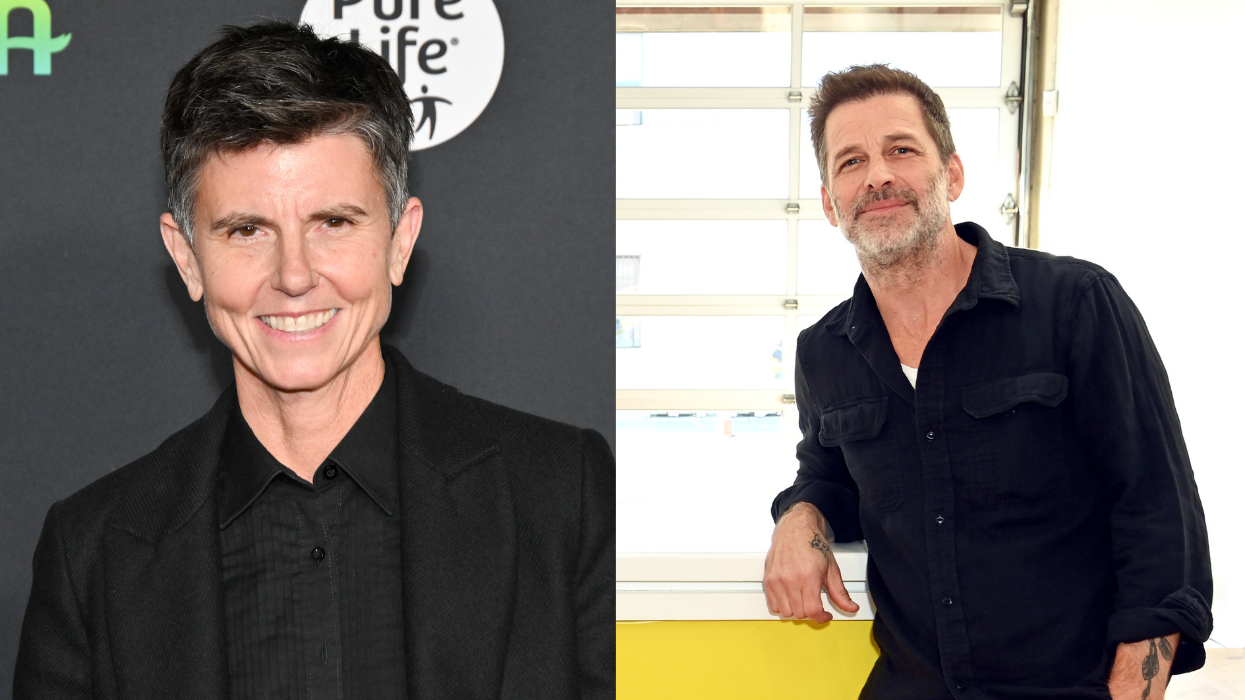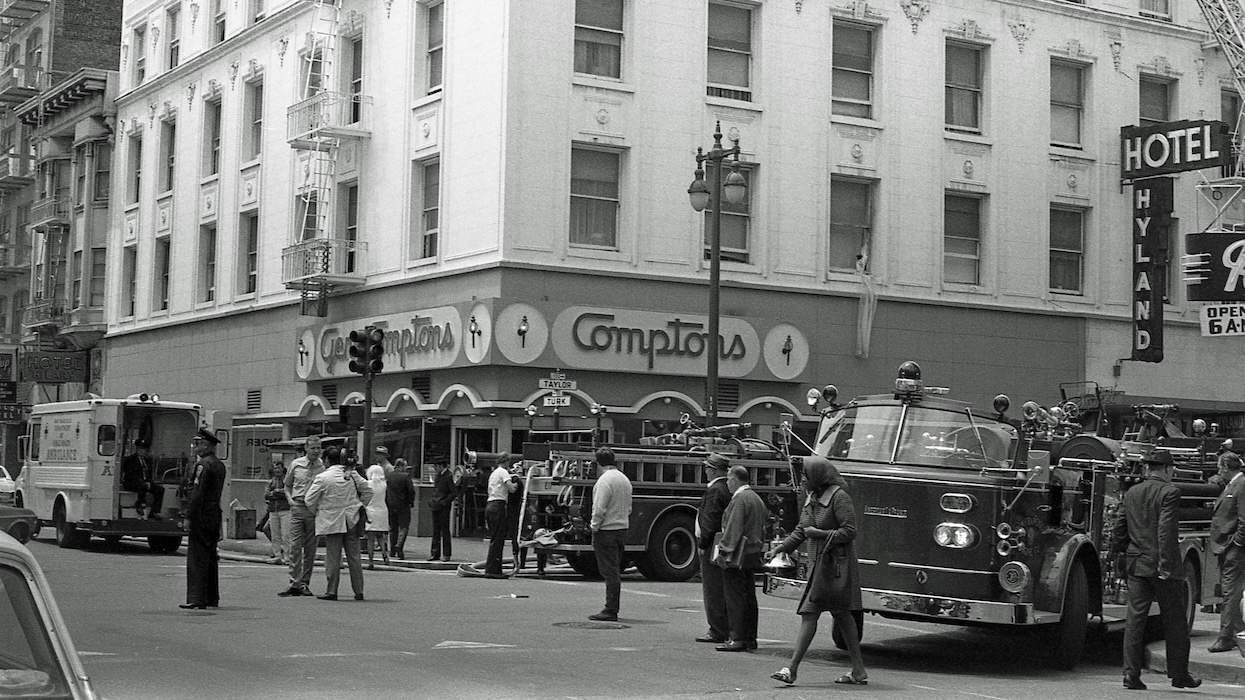Almost everything
seen in the movies, print media, or on TV regarding
transsexual people is in some way derogatory,
sensationalistic, or negatively stereotyped. The movie
Transamerica is no exception.
Yet transsexual
people generally like this movie. Transsexuals are so
accustomed to the media's negative and misinformed
treatment of the community that whenever anything
appears in the media that is remotely positive,
transsexuals embrace it with open arms as if it were a major
victory for truth. But in every presentation of
transsexuals, the media can't help but
tantalize the public with sensationalism.
No entertainment
program hits the mark of truth on this complex subject.
Newspaper articles often have a derogatory slant or use the
wrong pronouns and terminology. TV shows from
Oprah and Montel Williams to
documentaries and news programs focus more on the
shock value of transsexualism than on the human
commonalities.
Transamerica also enlists stereotypes meant to
shock and awe the viewer.
Transsexual
people talking about the movie will overwhelmingly say they
liked Transamerica and that it's good for the
trans community. If you press them, however, they will also
note parts they didn't like. Three main
critical themes arise--the film's
inaccuracies about the process of transition, its
unrealistic stereotyping, and the fact that a
transsexual woman did not play the lead role.
Almost all trans
people are actors by necessity: Before transition, the
majority have a need to pretend to be someone other than who
they really are. Some go back to acting and live
"stealth" once they can "pass,"
as the movie depicts. But living stealth is old-school
thinking, a stereotype that is behind the curve. More
and more, trans people are living a blended
life--known as trans people to many non-trans people.
Far fewer go through transition and then run away to
start a new life in total secret. "Super
stealth" is becoming rare in this information age
and less necessary for survival as antidiscrimination laws
that are transgender-inclusive slowly spread across
the country.
Trans people
already work in the entertainment field as actors, singers,
entertainers, models, and musicians. Finding a real
transsexual actress would not be that hard to do. Did
Hollywood ask Kate Bornstein or Namoli Brennet to
audition? Not likely. If there had been an open call for a
transsexual actor, a mob of contenders would have answered
it. Instead, Felicity Huffman, a genetic female,
played the preoperative transsexual character, Bree.
She did a fantastic job of acting the part of a
transsexual--of the 1970s. But the movie is set in the
present.
Understandably,
some stereotypes are necessary for this story line, but
there is far too much misinformation about transsexuals in
this movie. Some elements of the therapeutic
relationship depicted in the movie are also well
outside the "Harry Benjamin Standards of
Care," or normal therapeutic procedures and
ethics. For example, the gender therapist, Margaret
(played by Elizabeth Pena) would not hold a patient
hostage over unresolved issues regarding Bree's
newly discovered son, especially only weeks before her
sex-reassignment surgery. Surgeons in the United States
and Canada require that the mandatory support letters be
delivered well in advance, long before surgery can be
scheduled. Even surgeons in Thailand, who do not
require letters, need advance notice to schedule the
operation. Realistically, a therapist could not and would
not stop Bree from getting her surgery.
In addition, the
male doctor character portrayed in the film was way out
of the psychological mainstream, misrepresenting current
standards of diagnosis and treatment. Today,
transsexualism is not medically regarded as a
psychological pathology or mental disorder, and psychology
professionals by and large accept and understand much more
about the scientific, medical, and psychological
realities of transsexualism than the movie portrays.
That scene was as socially damaging to the trans
community as The Jerry Springer Show--and just
as unrealistic.
Bree demonstrates
various stereotyped modalities that are far from the
everyday realities of the contemporary trans community. Her
manner of dress is not usual for a transsexual
who's been living "full-time" as a
woman for more than a year, has had at least 300 hours of
electrolysis (which, typically, takes years), and has
been in therapy for so long. Bree may be typical of a
person transitioning 30 or more years ago--but
not today.
Bree was dressed
and made up like a stereotypical aging cross-dresser who
favors clothing popular in her youth, not a person ready for
sex-reassignment surgery in the modern world. Today's
trans women generally look and dress just like any
other women. How many women on the street are dressed
like the "church lady" from Saturday Night
Live? To blend or be stealth requires that one
fits in. Bree stands out like a neon light in her 1950s
attire. She is too young to dress so old.
Another major
problem is in the plotline. Bree's son, Toby (Kevin
Zegers), because he's a street hustler, would be able
to read Bree as a transsexual a mile away, since he
would travel the same grounds that transsexual and
transvestite prostitutes frequent. For that matter, a
person in Toby's position would especially not be so
easily fooled during the potluck scene, which was
unrealistic and uncharacteristic of a gathering of
trans women. The group's dialogue itself was typical
Hollywood sensationalism--humorous, but misleading.
Yet in spite of
enforcing stereotypes and utilizing disinformation,
Transamerica is a movie that does more good than
harm, because it is well-written, well-acted, and humanizes
the rarefied main characters. Good fiction is driven
by believable characters who experience real-life
conflicts, things that everyone can identify with.
Ultimately,
Transamerica is a movie about relationships,
revelations, loss, and healing. The lives of the
characters are unusual, but their humanity is universal.
Transamerica's most important message to the
larger world about the trans community is that trans folks
are human too. Transamerica transcends
superficial gender lines and reaches deep into the
human heart. An audience expecting an educational
piece of filmmaking will find itself misinformed. But as a
movie with gut-wrenching lessons on the diversity of
humanity, this movie succeeds with flying rainbow
colors.




































































Charlie Kirk DID say stoning gay people was the 'perfect law' — and these other heinous quotes